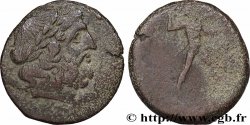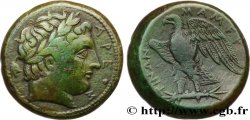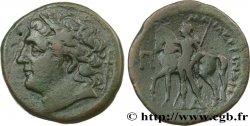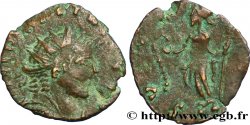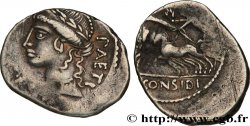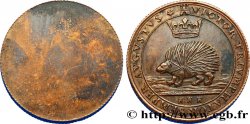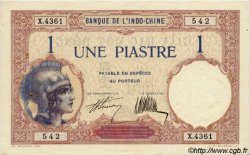E-auction 324-240366 - bgr_540141 - SICILY - MESSANA Pentonkion
You must signin and be an approved bidder to bid, LOGIN TO BID. Accounts are subject to approval and the approval process takes place within 48 hours. Do not wait until the day a sale closes to register. Clicking on « bid » constitutes acceptance of the terms of use of cgb.fr private e-auctions.
Bids must be placed in whole Euro amounts only. The sale will start closing at the time stated on the item description; any bids received at the site after the closing time will not be executed. Transmission times may vary and bids could be rejected if you wait until the last second. For further information ckeck the E-auctions F.A.Q.
NO BUYER'S FEE.
NO BUYER'S FEE.
| Estimate : | 150 € |
| Price : | 60 € |
| Maximum bid : | 90 € |
| End of the sale : | 01 July 2019 14:02:00 |
| bidders : | 4 bidders |
Type : Pentonkion
Date: c. 230-200 AC.
Mint name / Town : Messine, Sicile
Metal : copper
Diameter : 27,5 mm
Orientation dies : 8 h.
Weight : 11,74 g.
Rarity : R1
Coments on the condition:
Exemplaire bien centré à l’usure régulière. La monnaie reste bien identifiable. Patine verte
Catalogue references :
Obverse
Obverse legend : ANÉPIGRAPHE.
Obverse description : Tête laurée de Zeus à droite; grènetis circulaire.
Reverse
Reverse description : Hoplite nu (Arès), casqué, tenant une javeline transversale de la main droite et un bouclier de la gauche.
Reverse legend : [MAMERTINWN]/ P
Reverse translation : (des Mamertains/ Pentonkion).
Commentary
Poids léger.
Lightweight
Lightweight







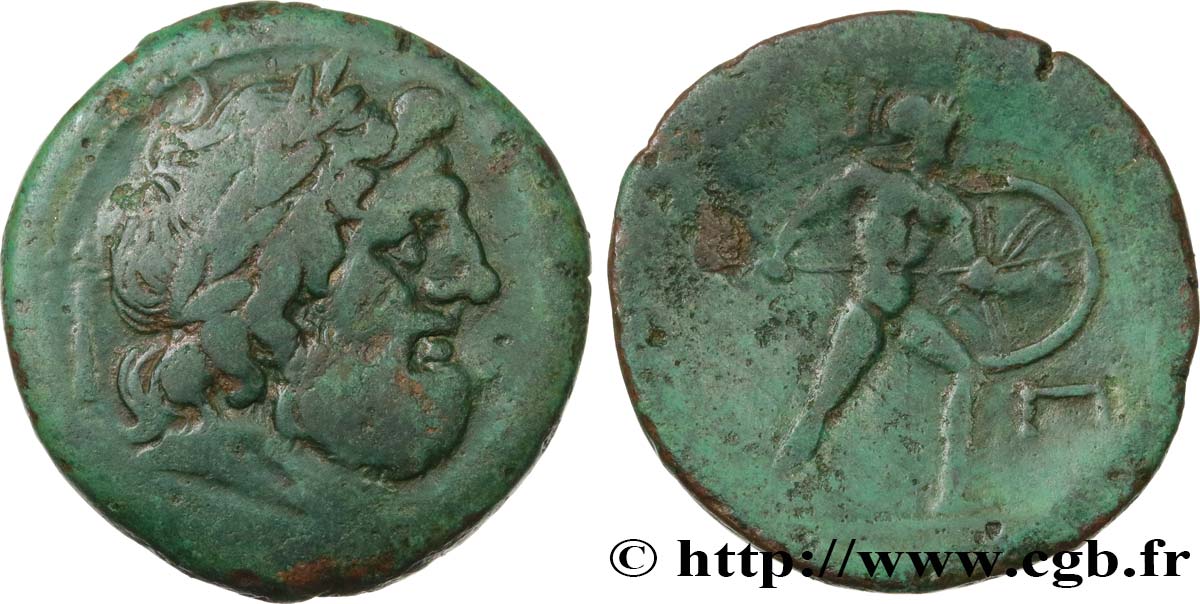
 Report a mistake
Report a mistake Print the page
Print the page Share my selection
Share my selection Ask a question
Ask a question Consign / sell
Consign / sell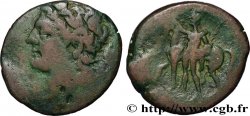
 Full data
Full data